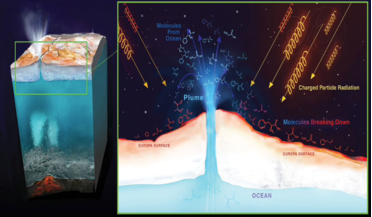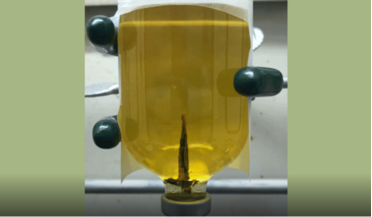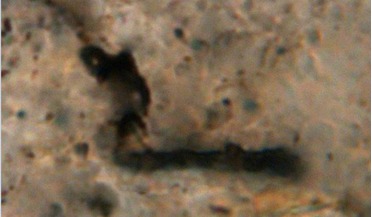 25 July 2018
Radiation on Europa dictates where search for life begins
25 July 2018
Radiation on Europa dictates where search for life begins
... few years, would their instruments be able to detect signs of life on its surface or will a lander have to dig deep to...Europa’s poles. Although amino acids are not strictly a sign of life, they are the building blocks for proteins and they also serve...
 04 March 2019
Does life grow like this elsewhere in the cosmos?
04 March 2019
Does life grow like this elsewhere in the cosmos?
... too could bond to form more complex organic molecules that could lead to life. "We've shown that in geological conditions similar to early Earth, and maybe to other planets, we can form amino acids and alpha hydroxy acids from a simple...
 08 December 2021
Iron might be key for finding life on other worlds, new study says
08 December 2021
Iron might be key for finding life on other worlds, new study says
... left over in the mantle to conserve surface water, complex life was able to evolve. But what about other planets near and far away? "It is not known how common intelligent life is in the Universe' says Prof Drakesmith. "Our concepts...
 25 February 2019
Scientists create DNA-like molecule to aid search for alien life
25 February 2019
Scientists create DNA-like molecule to aid search for alien life
... the familiar DNA double helix structure that is essential for life on this planet could be bigger with more crammed in. DNA stands for ...providing a habitat suitable for life to flourish? Who knows, but NASA and other major space agencies around the...
 08 March 2021
New study determines best place and time to live in the Milky Way
08 March 2021
New study determines best place and time to live in the Milky Way
...the world. Life as we know it would be altered beyond recognition. So would inhabitants on Earth be less at risk if our planet was elsewhere ...the high metallicities of the central regions”. Although other high-energy events such as supernovae can have...
 20 December 2017
Methane-producing microorganisms suggest life in the Universe is common
20 December 2017
Methane-producing microorganisms suggest life in the Universe is common
...produce and consume methane. "By 3.465 billion years ago, life was already diverse on Earth; that's clear – primitive ...photosynthesis, while another apparently produced methane gas, and two others appear to have consumed methane and used it to build ...